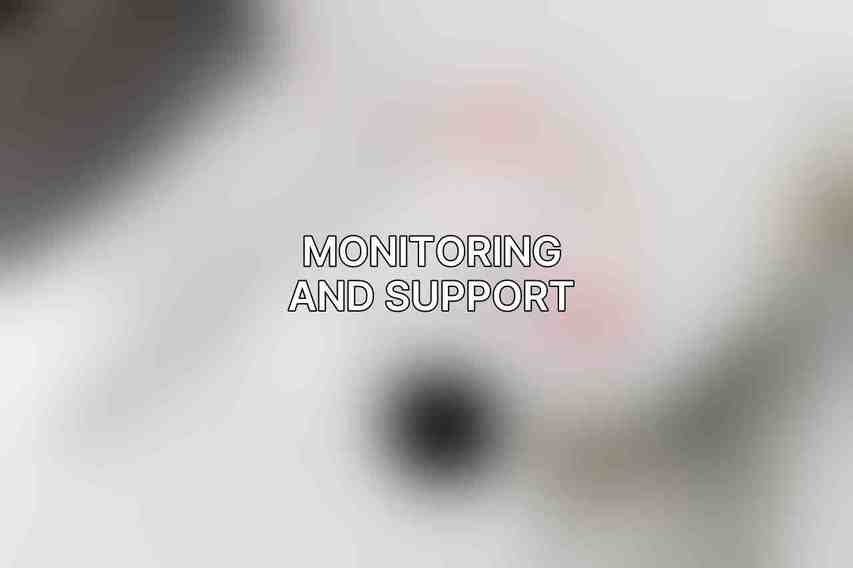Website migration can be a complex process that requires meticulous planning and execution to minimize downtime and ensure a smooth transition. By following strategic steps and best practices, businesses can mitigate risks and disruptions during the migration process. This article delves into comprehensive strategies to minimize downtime during website migration.
Pre-Migration Planning

Before embarking on a website migration, thorough pre-migration planning is essential to set the stage for a successful transition. This phase involves critical tasks to define objectives, establish a clear roadmap, and allocate resources effectively.
Set Clear Objectives and Scope: Clearly define the goals and scope of the migration to align stakeholders and ensure a focused approach.
Define Key Performance Indicators (KPIs) and Success Metrics: Establish measurable KPIs to track progress and evaluate the success of the migration process.
Identify Critical Dependencies and High-Impact Areas: Identify potential risks, dependencies, and areas that may be susceptible to downtime or disruptions.
Determine Data Mapping and Transformation Requirements: Understand the data structure and requirements for seamless migration of content and assets.
Establish a Comprehensive Migration Plan: Develop a detailed plan outlining tasks, timelines, and milestones to guide the migration process effectively.
Designate a Dedicated Migration Team with Clear Roles and Responsibilities: Assemble a skilled team with defined roles to ensure accountability and collaboration throughout the migration.
Data Migration Preparation
Data migration preparation is a crucial phase that involves extracting, cleansing, and validating data to ensure its integrity and compatibility with the new environment.
Data Extraction and Validation: Extract data from the existing system and validate its accuracy and completeness before migration.
Data Mapping and Transformation: Map data sources to target systems and transform data formats as needed for compatibility.
Data Integrity Checks and Data Cleansing: Conduct thorough data integrity checks and clean the data to eliminate errors and inconsistencies.
Data Load Testing and Security Measures: Test data loading processes and implement robust security measures to safeguard data during migration.
Establish a Data Backup and Recovery Plan: Develop a backup strategy to prevent data loss and ensure quick recovery in case of unexpected issues during migration.
Technical Migration Execution
The technical migration execution phase involves deploying the necessary infrastructure, transferring code, and performing rigorous testing to ensure a seamless transition.
A. Server and Infrastructure Considerations
Load Balancing and Scalability: Implement load balancing mechanisms to distribute traffic efficiently and ensure scalability to accommodate increased user load.
Domain Name System (DNS) Changes: Update DNS records to point to the new server or infrastructure to redirect traffic seamlessly.
Web Server Optimization: Fine-tune web server configurations for optimal performance and reliability during the migration process.
Content Delivery Network (CDN) Integration: Integrate CDN services to accelerate content delivery and enhance website performance post-migration.
B. Code Migration
Static File Transfer: Transfer static files efficiently to the new server to minimize downtime and ensure content availability.
Database Migration: Migrate databases smoothly, ensuring data consistency and integrity while minimizing disruptions.
Code Refactoring and Optimization: Refactor code as needed for improved performance, security, and compatibility with the new environment.
C. Testing and Validation
Unit Testing and Regression Testing: Conduct unit tests and regression tests to identify and rectify code errors or functionality issues.
Performance Testing and Load Testing: Measure system performance under varying loads to optimize server resources and enhance user experience.
User Acceptance Testing: Involve stakeholders in user acceptance testing to validate functionality and usability before final deployment.
Monitoring and Support

Continuous monitoring and robust support mechanisms are essential to detect and address issues promptly during and after migration.
A. Real-Time Monitoring Tools
Server Monitoring: Utilize server monitoring tools to track server performance metrics and identify potential bottlenecks.
Application Monitoring: Monitor application performance and uptime to ensure continuous availability and optimal user experience.
Traffic Monitoring: Monitor website traffic patterns to anticipate load spikes and optimize server resources accordingly.
B. Incident Response Plan
Defined Escalation Procedures: Establish clear escalation procedures to address issues promptly and involve relevant stakeholders as needed.
Emergency Contact List and On-Call Support: Maintain an emergency contact list and provide on-call support for rapid incident resolution.
C. Communication and Transparency
Regular Status Updates: Provide regular updates on migration progress, issues, and resolutions to keep stakeholders informed.
Clear Communication Channels for Users and Stakeholders: Establish clear communication channels to update users and stakeholders about the migration process and potential impacts.
Social Media and Customer Service Support: Utilize social media and customer service channels to address user queries and concerns during migration.
Post-Migration Optimization and Recovery
After completing the migration, it is crucial to optimize performance, monitor for issues, and execute recovery plans efficiently to minimize downtime and disruptions.
A. Performance Analysis and Fine-Tuning
Optimization for Speed and Stability: Analyze performance metrics and optimize configurations for improved speed and stability.
Content Optimization and Cache Management: Optimize content delivery and implement effective cache management strategies for enhanced website performance.
B. Recovery Plan Execution
Monitoring and Detection of Issues: Monitor the website post-migration for any issues or anomalies and detect them proactively.
Rapid Response and Recovery Procedures: Implement rapid response procedures to address issues promptly and minimize downtime.
Minimizing Impact on Users and Stakeholders: Prioritize minimizing the impact on users and stakeholders by proactively managing and resolving issues.
by adhering to comprehensive strategies encompassing pre-migration planning, data migration preparation, technical migration execution, monitoring and support, and post-migration optimization, businesses can effectively minimize downtime during website migration. Employing best practices and leveraging technology tools will contribute to a seamless migration experience, ensuring uninterrupted access to websites and mitigating risks associated with downtime.
Frequently Asked Questions
What is website migration?
Website migration refers to the process of moving a website from one hosting environment to another, which could involve changing servers, domains, or redesigning the site structure.
Why is downtime important to minimize during website migration?
Downtime can affect user experience, SEO rankings, and overall business performance. Minimizing downtime is crucial to prevent lost revenue and maintain customer trust.
What are some strategies to minimize downtime during website migration?
Some strategies include thorough planning, testing the new website before migration, choosing an appropriate time for migration, implementing 301 redirects, and keeping stakeholders informed about the process.
How can I test the new website before migration to minimize downtime?
You can set up a staging environment to replicate the new website and test all functionalities thoroughly. This helps identify any issues before the actual migration takes place.
What is the best time to schedule a website migration to minimize downtime?
It is advisable to schedule website migrations during off-peak hours when website traffic is at its lowest. This minimizes the impact on users and ensures a smoother transition.
